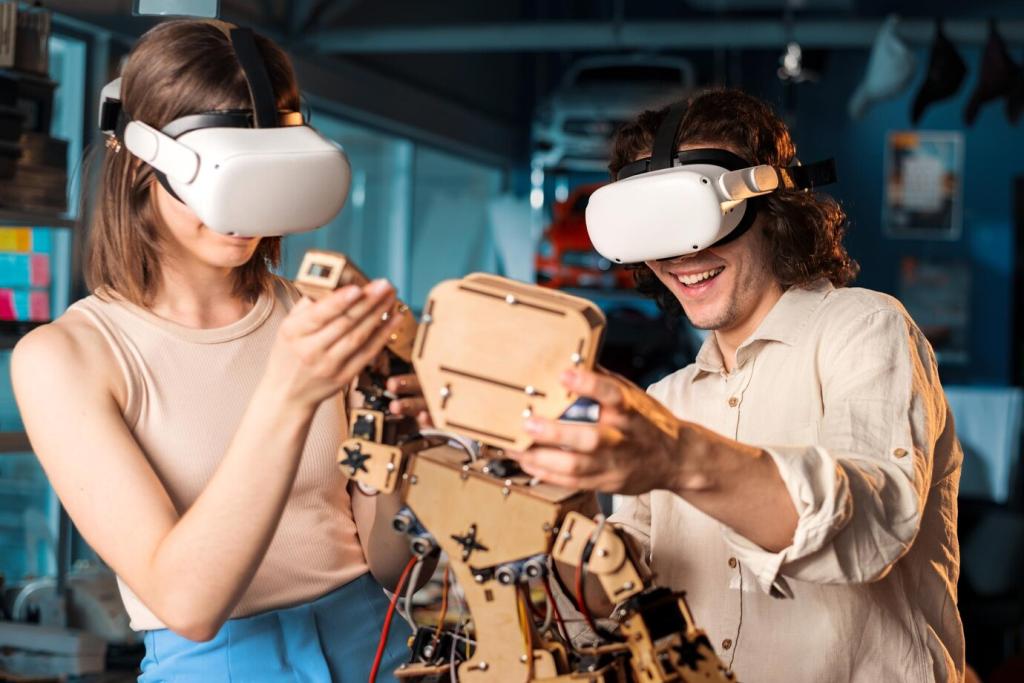Moving and Making Noise: Outputs and Actuators
Use single LEDs for status or RGB LEDs for moods—green for ready, blue for learning, red for low battery. Create light animations that match robot actions, then share your best pattern so others can learn expressive signaling.
Moving and Making Noise: Outputs and Actuators
Add an H-bridge or motor driver shield to spin wheels forward and backward. Experiment with speed via PWM to glide smoothly. Post your wiring diagram and code snippet to help peers avoid common power and grounding mistakes.
Moving and Making Noise: Outputs and Actuators
Servos rotate to exact angles, perfect for steering, grippers, and scanning sensors. Smooth motion builds trust in your robot’s behavior. Show us a short video of your servo sweep mapping room features like a tiny radar dish.








